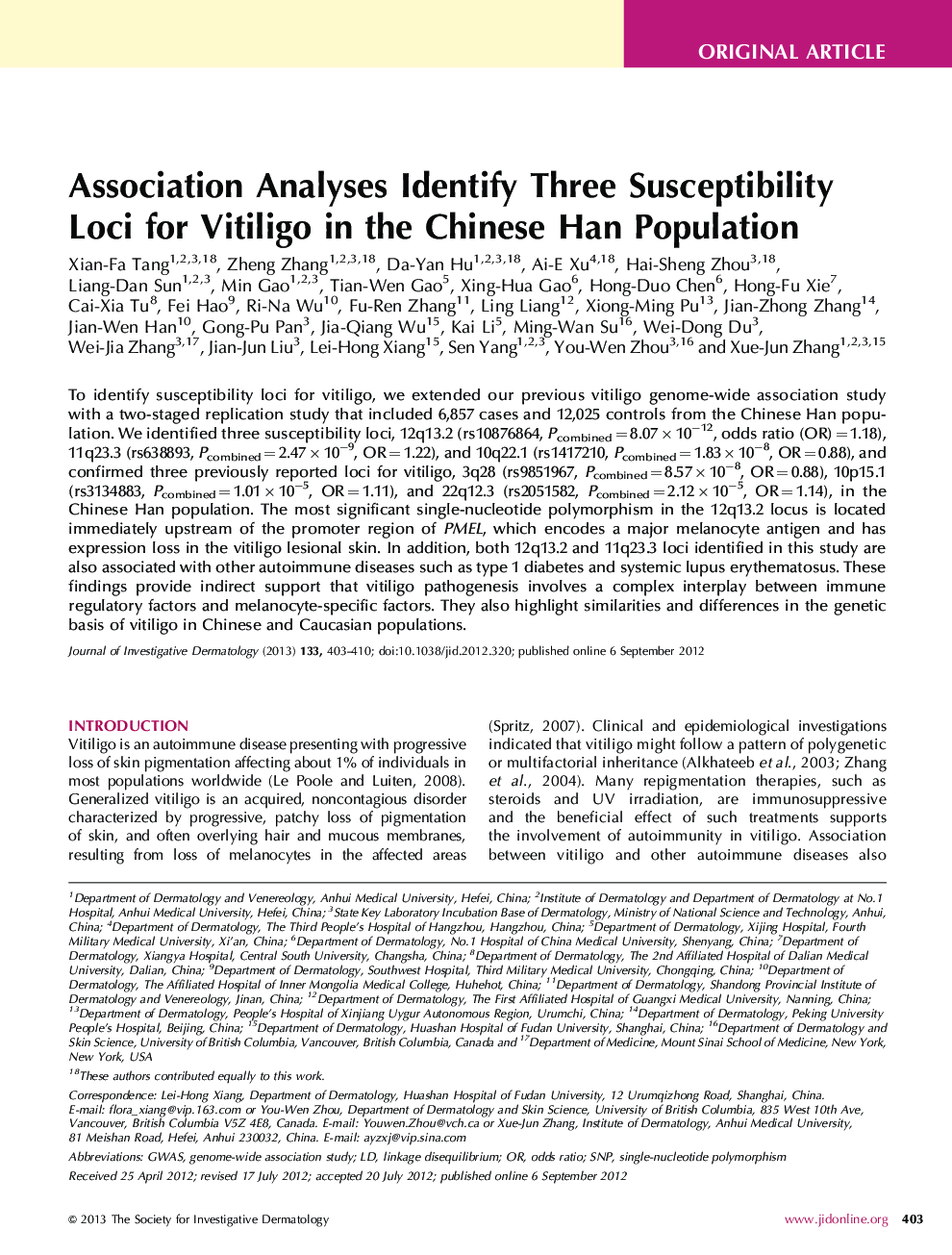| Article ID | Journal | Published Year | Pages | File Type |
|---|---|---|---|---|
| 6077976 | Journal of Investigative Dermatology | 2013 | 8 Pages |
To identify susceptibility loci for vitiligo, we extended our previous vitiligo genome-wide association study with a two-staged replication study that included 6,857 cases and 12,025 controls from the Chinese Han population. We identified three susceptibility loci, 12q13.2 (rs10876864, Pcombined=8.07 Ã 10â12, odds ratio (OR)=1.18), 11q23.3 (rs638893, Pcombined=2.47 Ã 10â9, OR=1.22), and 10q22.1 (rs1417210, Pcombined=1.83 Ã 10â8, OR=0.88), and confirmed three previously reported loci for vitiligo, 3q28 (rs9851967, Pcombined=8.57 Ã 10â8, OR=0.88), 10p15.1 (rs3134883, Pcombined=1.01 Ã 10â5, OR=1.11), and 22q12.3 (rs2051582, Pcombined=2.12 Ã 10â5, OR=1.14), in the Chinese Han population. The most significant single-nucleotide polymorphism in the 12q13.2 locus is located immediately upstream of the promoter region of PMEL, which encodes a major melanocyte antigen and has expression loss in the vitiligo lesional skin. In addition, both 12q13.2 and 11q23.3 loci identified in this study are also associated with other autoimmune diseases such as type 1 diabetes and systemic lupus erythematosus. These findings provide indirect support that vitiligo pathogenesis involves a complex interplay between immune regulatory factors and melanocyte-specific factors. They also highlight similarities and differences in the genetic basis of vitiligo in Chinese and Caucasian populations.
